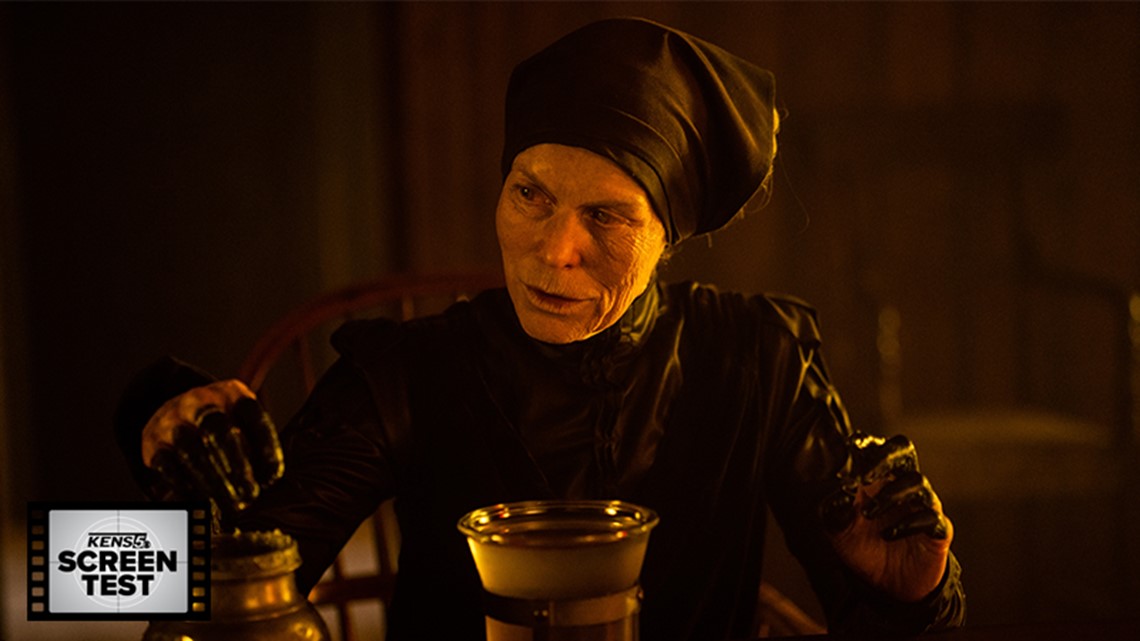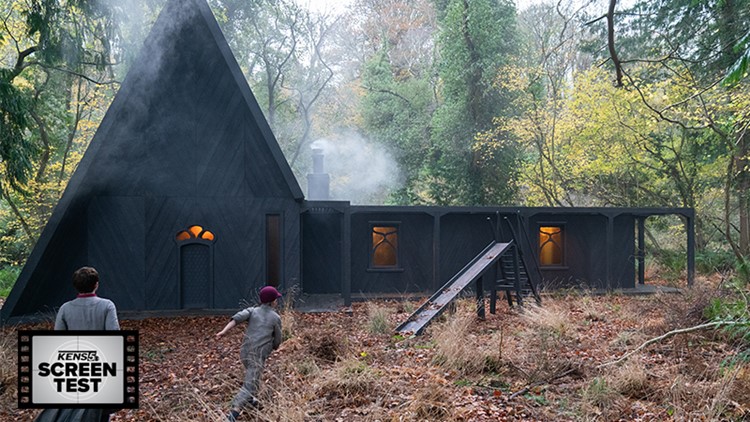In virtually every respect, Osgood Perkins’s darkly atmospheric “Gretel & Hansel” could not be more different from the last major effort to borrow the Grimm Brothers’ mythic siblings for the big screen, Tommy Wirkola’s bombastic fantasy actioneer “Hansel & Gretel: Witch Hunters.” That movie – starring Jeremy Renner and Gemma Arterton as crossbow-toting heroes evoking the rock-em, sock-em spirit of “Van Helsing” more than a children-oriented tale of foreboding – was released just seven years ago, but “Gretel & Hansel” shows how seven years is more than enough for Hollywood’s creative minds to steer in entirely new directions, and for the industry to transition into new epochs.
The switcheroo of the title is the first sign of a new interpretation of the 200-year-old Grimm story, and it bears out in a visually-stunning, ideologically-enticing fairy tale that echoes a feminine spirit without betraying its source material’s grim (pun fully intended) sensibilities. Bringing the focus back onto Hansel and Gretel as young children – though they’re not as naïve as we might expect – Perkins’s movie trades the leather-clad “Underworld” Effect for the quieter, creepier influences of latter-decade horror. It owes much to Robert Eggers, Luca Guadagnino and occasionally Yorgos Lanthimos as well, what with its entrenching visual style of dark shadows stabbed by neon and keen self-awareness about the magnitude of folklore.
Starring “IT’s” Sophia Lillis and round-faced Hollywood newcomer Samuel Leakey, “Gretel & Hansel” is re-interpretation, modernization, perhaps origin story, too – and its 90-minute runtime certainly sprints by – buoyed by an elegant dread that tests its PG-13 rating. The start to the story is familiar enough, though its themes are remixed on approach: After a brief storybook prologue informing us of the evil that presumably lurks in the woods, Gretel and Hansel are off and fending for themselves in the forest, brought there by the former’s taking it upon herself to exercise them from a threatening mother. Chilly visuals establish the strict isolation no child should have to feel, as does Gretel’s reluctance to accept any outstretched offer of support. She believes that motivations extend beyond what the eyes can see, and her code is that individual agency will always reap more than stranger’s gifts. After all, they're never just gifts.


If it sounds like this “Gretel & Hansel,” written by Rob Hayes, is a more character-focused approach, you’d be on the right breadcrumb trail. After introducing the film’s requisite and strangely benevolent witch – Holda, played by Alice Krige to creepy and malicious effect – the depth of ideas in Hayes’s hit-or-miss screenplay begins to show itself, injecting fresh commentary into an age-old story without skimping on the iconic details of child-devouring and familial unity, despite some wooden dialogue. There are few things more empowering to a child than empowerment, “Gretel & Hansel” shows, and even fewer things more dangerous. More than a simple don’t-talk-to-strangers tale, “Gretel & Hansel” is attracted to concepts of vulnerability and fulfillment along gender lines as Holda helps Gretel come into her own while insisting that “that little boy is your poison.” Against the backdrop of some playful visuals and a few legitimate scares, the themes have room to stretch into profound, truly memorable territory.
They rarely do fully stretch, though. Frustratingly, the movie’s hallucinogenic aesthetic flair can’t hoist the ending of this parable of witches and personal narrative to being as resonant as it wishes itself to be. Its borrowed elements are realized to sinister aplomb – made complete by Robin Coudert’s electro-cosmic score and some truly horrific sound design – but the most self-contained component, the story, relegates the audience to the strange position of feeling like little was left to their imagination while also wishing for another 25 minutes of plot development for the movie’s final scenes to fully satisfy.
Maybe the best compliment I can give “Gretel & Hansel” is that I wish more movies like this played on IMAX-sized screens between showings of “Star Wars” and “1917.” You can argue that cinematographer Galo Olivares – whose work up to this point consists largely of shorts – overindulges himself on villainous reds and ambiguous yellows, but few recent movies channel extravagant use of color into something resembling another plane of reality altogether—which is apt for what Perkins is trying to achieve in his storytelling, and in the portrayal of Gretel discovering a new level to her identity. I was reminded of Panos Cosmatos’s 2018 cosmic revenge saga “Mandy” more than a few times, thanks to the eccentric similarities connecting both movies’ forms and functions.
“Gretel & Hansel” may ultimately not be as good as it thinks it is – though it’s a much more engrossing watch than we should expect from a January release – but I more than appreciate the big swing Perkins takes with his morbid, sly and, yes, bloody film, which more than anything is a fascinating example of the dichotomy that manifests when filmmakers decide to stretch some of our most well-known stories in such contrasting paths. If the Grimm Brothers’ catalogue is a filmmaker’s sandbox, “Gretel & Hansel” is a bucket of needles dumped into it—bold, dangerous and exponentially more intimate.
"Gretel & Hansel" is rated PG-13 for disturbing images/thematic content, and brief drug material
Starring: Sophia Lillis, Alice Krige, Jessica De Gouw, Samuel Leakey
Directed by Osgood Perkins
2020
OTHER KENS 5 SCREEN TEST REVIEWS:
- '1917' Review: Sam Mendes's technically triumphant war film can get in its own way
- 'Ford v Ferrari' Review: Racecar drama isn't quite as gripping in its story as it is thrilling on the track
- The Last Full Measure' Review: A shoddily-built education about a Vietnam War hero
- 'Underwater' Review: So-so aquatic disaster flick is a true January doldrums release



